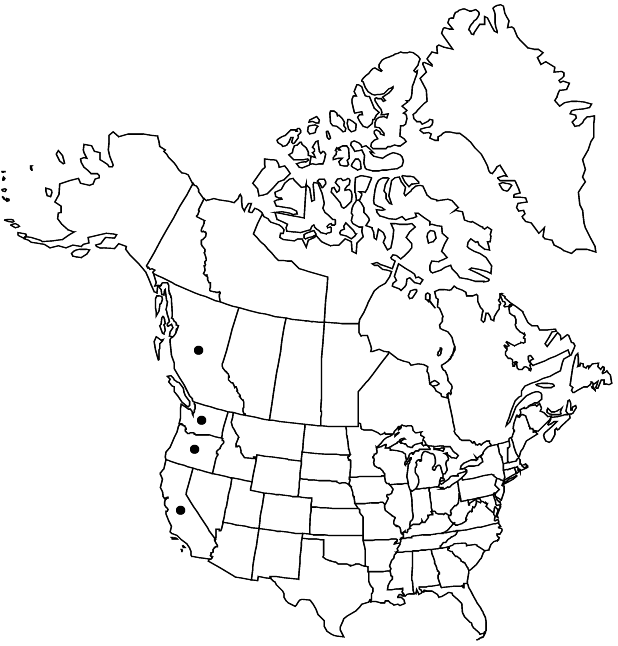Difference between revisions of "Boykinia occidentalis"
Fl. N. Amer. 1: 577. 1840 ,.
imported>Volume Importer |
imported>Volume Importer |
||
| Line 105: | Line 105: | ||
|publication year= | |publication year= | ||
|special status=Illustrated;Endemic | |special status=Illustrated;Endemic | ||
| − | |source xml=https:// | + | |source xml=https://bitbucket.org/aafc-mbb/fna-data-curation/src/2e0870ddd59836b60bcf96646a41e87ea5a5943a/coarse_grained_fna_xml/V8/V8_254.xml |
|genus=Boykinia | |genus=Boykinia | ||
|species=Boykinia occidentalis | |species=Boykinia occidentalis | ||
Latest revision as of 22:42, 5 November 2020
Plants: rhizomes proliferating underground. Flowering stems 15–60(–100) cm. Basal leaves: petiole (3–)6–18(–27) cm; blade usually ± orbiculate-cordate, sometimes reniform, 3–9-lobed to 1/2 its length, (1.5–)2–8(–11) × (1.5–)3–8(–12) cm, margins 2–3-times crenate to dentate. Cauline leaves: stipules 1–2 mm expansions of petiole base, fringed with brown hairs. Inflorescences pyramidal, 5–10(–19)-flowered per primary branch. Pedicels densely stipitate-glandular. Flowers: hypanthium campanulate to turbinate, free portion (0.7–)0.9–1.2(–1.8) mm, densely stipitate-glandular; sepals erect, lanceolate to narrowly lanceolate, 1–2.5 mm, apex acute; petals spatulate to ovate, (2.5–)4–6(–7) × 1–2 mm, 2–3 times as long as sepals, base tapered to claw, margins plane; nectary green; stamens 1–1.5 mm; ovary 3/4 inferior. Capsules ovoid, turbinate, or urceolate. Seeds usually black, tuberculate. 2n = 14.
Phenology: Flowering summer.
Habitat: Damp woodland, margins of lakes, ponds, bogs, and watercourses, often on disturbed soil, trailsides, mudslides
Elevation: 0-1400(-1700) m
Distribution

B.C., Calif., Oreg., Wash.
Discussion
The nomenclature of Boykinia occidentalis has been reviewed by R. J. Gornall and B. A. Bohm (1985). It is a polymorphic species but is not as variable as the extensive synonymy might suggest. Taxa have been described on the basis of variation in inflorescence shape, pubescence, stem color, and sepal orientation. It has been shown that these characters are subject to phenotypic plasticity or developmental age and, as such, provide no grounds for dividing the species (Gornall and Bohm). It is sometimes grown in gardens.
Selected References
None.
